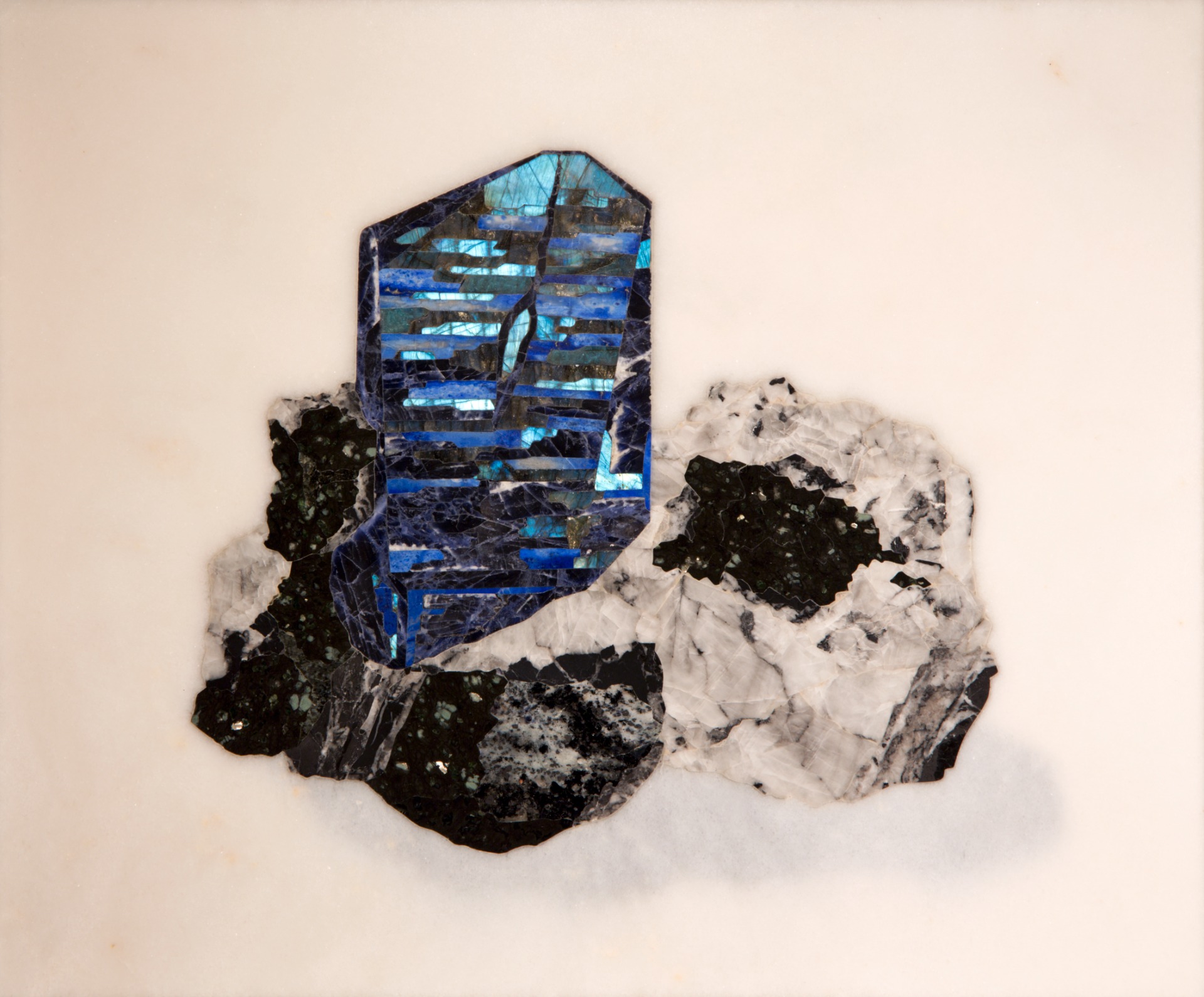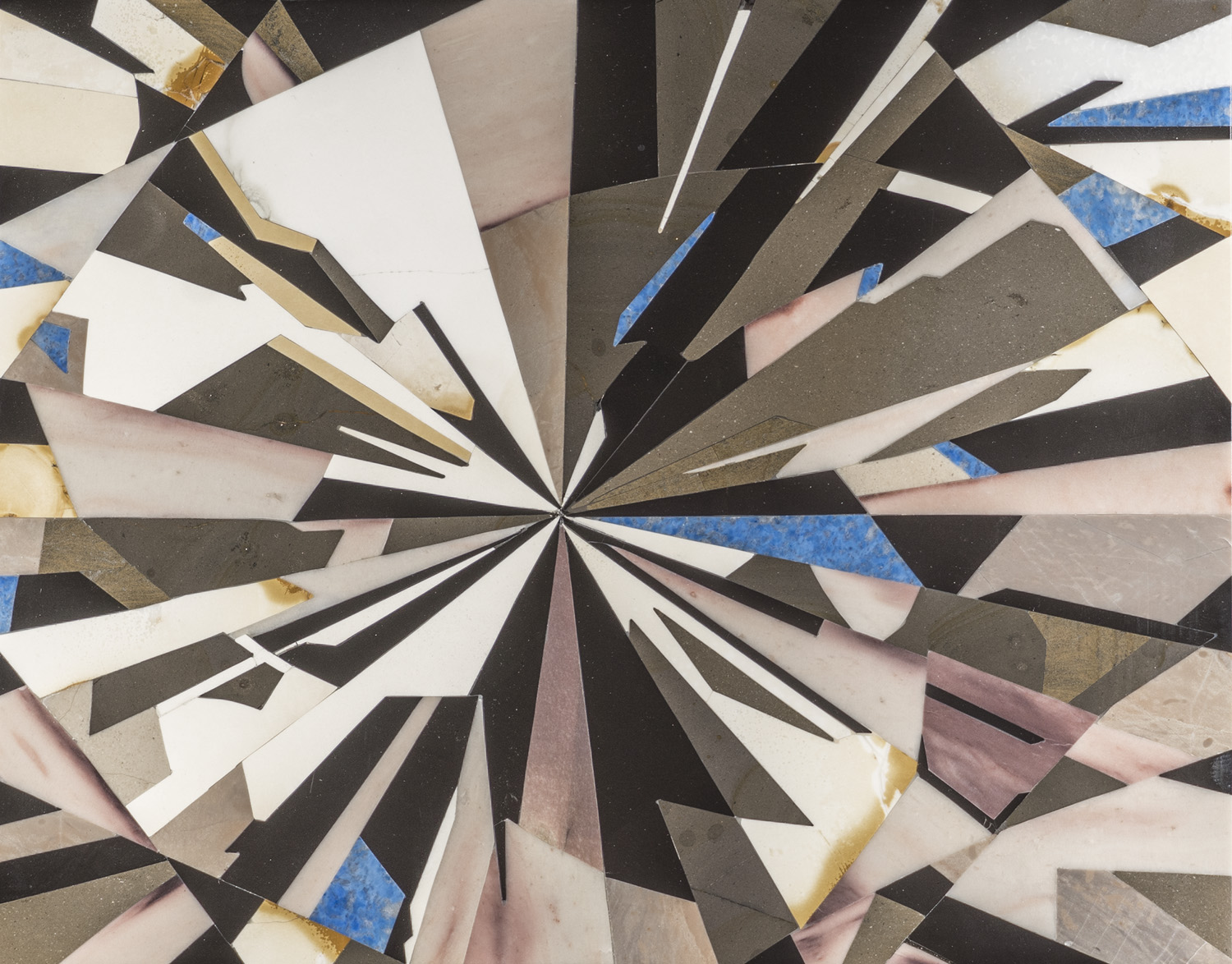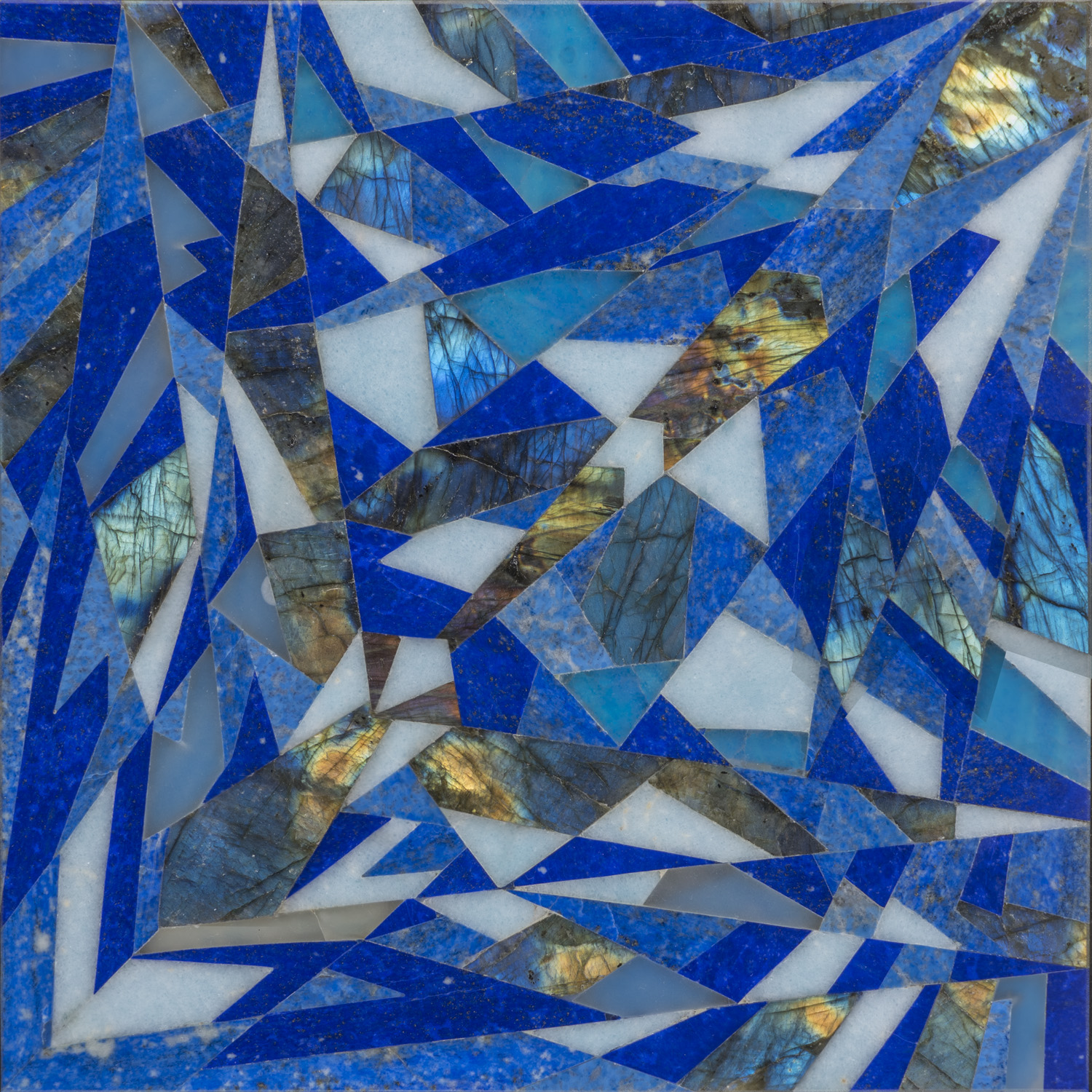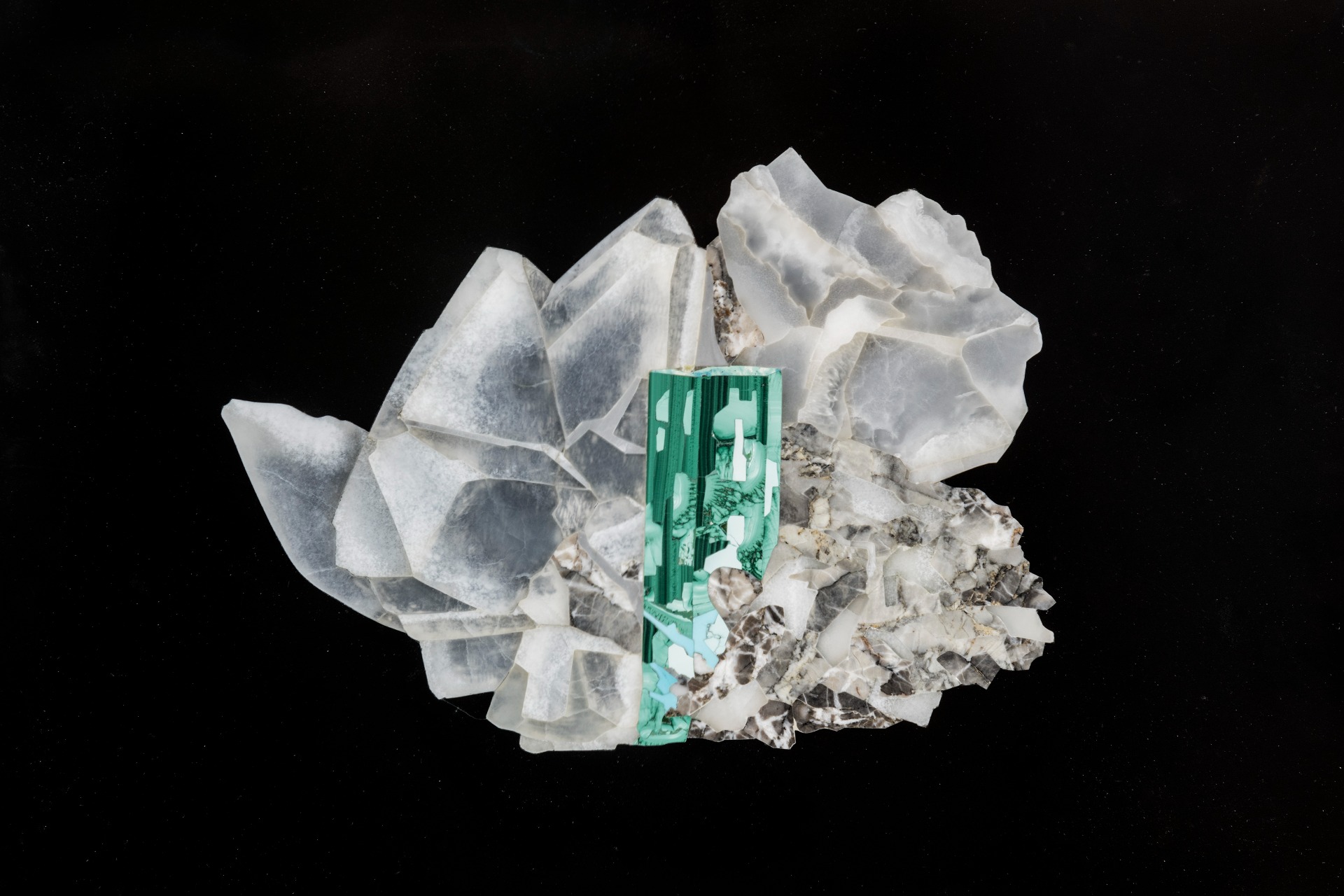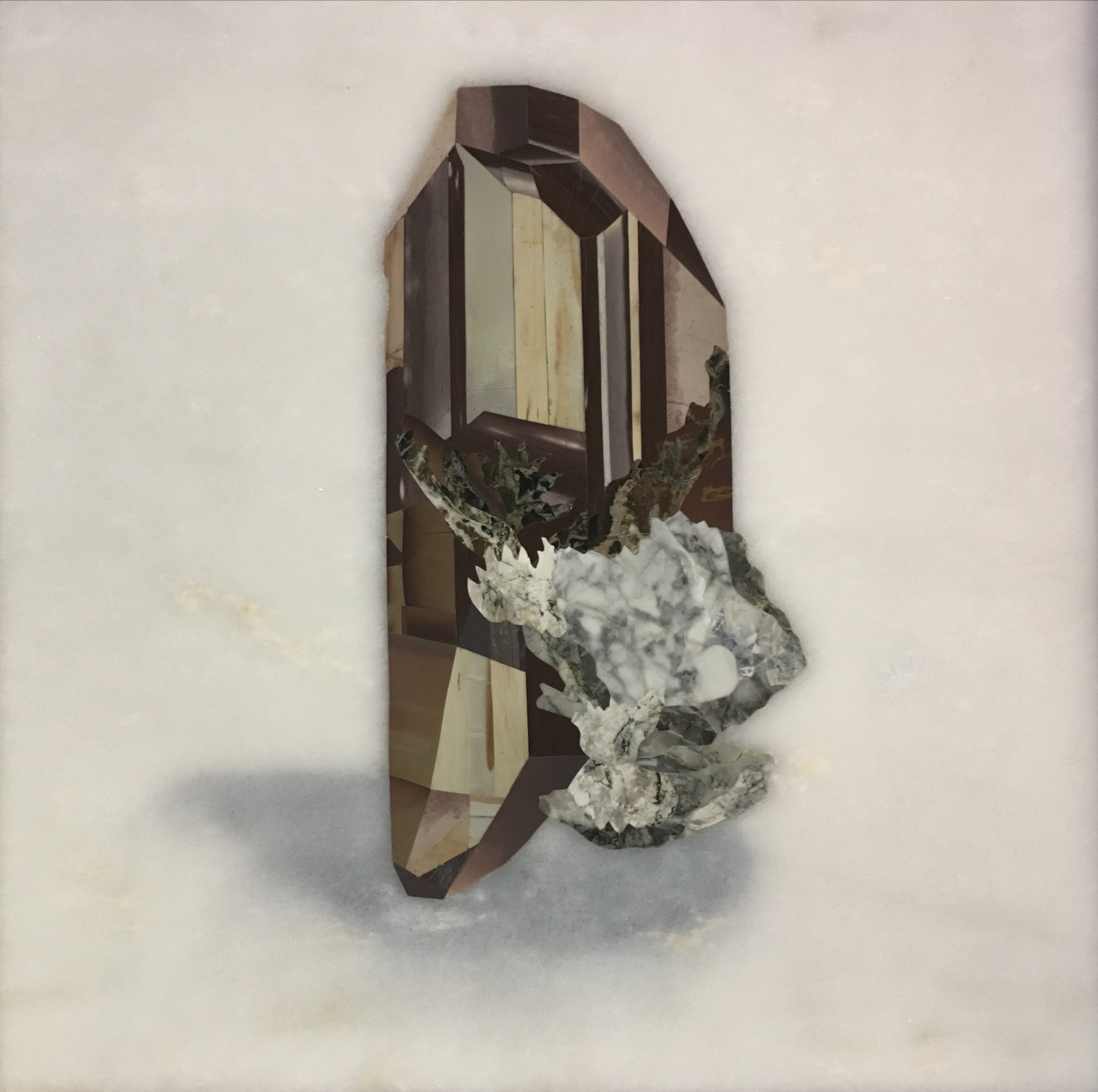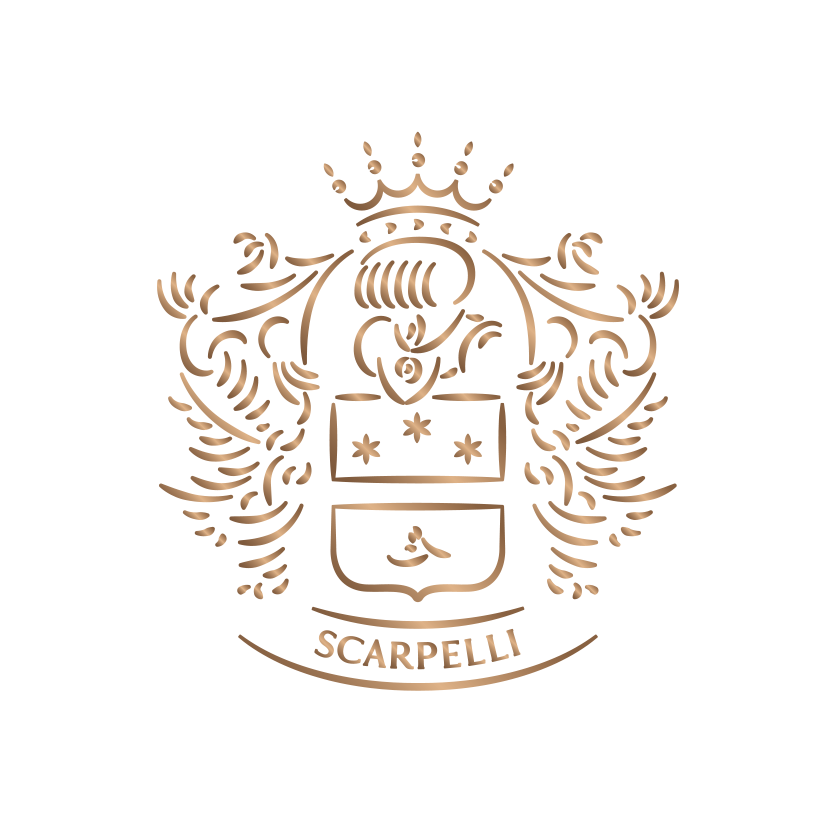Rhodochrosite
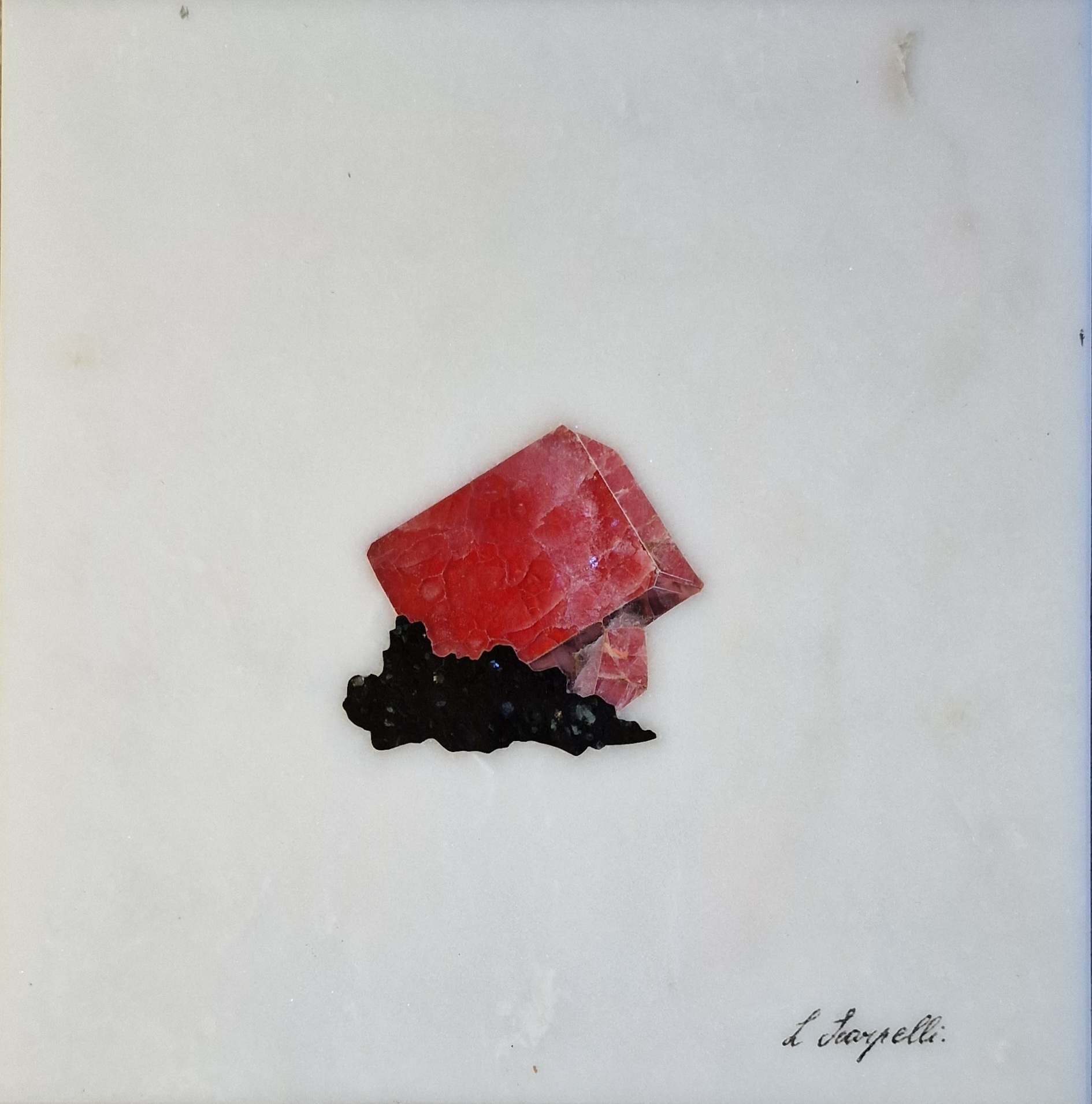
This mosaic was made by Leonardo taking inspiration from the Gem's Show in Munich. We got in touch with the mineral world few years ago when we were invited to show our art in the most famous European Gem Show. It's a real challenge.
Looking at the intense colors, the transparency and the life inside minerals and gems Leonardo decided to create an artwork which combines geometry and shine.
Rhodochrosite is a common mineral of the calcite group belonging to the mineral class of "carbonates and nitrates" with chemical composition MnCO3, therefore from a chemical point of view it is a manganese carbonate.
Johann Friedrich Ludwig Hausmann gave it the name "rhodochrosite" in 1813, which is still valid today; the name derives from the union of the ancient Greek words ῥόδον ('rhódon', pink) and χρώς ('cros', colour).
The type locality for rhodochrosite is the "Cavnic mine" in Romania. The mineral, in America, is known as "pink of the Incas", as the rocks in which this mineral is found were particularly exploited by the Incas themselves in the 13th century to extract silver and copper. Of note for its important findings of rhodochrosite is the "Sweet Home Mine" near Alma (Colorado), where rhombohedral crystals up to 15 cm in size have come to light.
Rhodochrosite is a fairly common sedimentary mineral that forms in the oxidation zone of sulfide deposits where the presence of manganese is detected. Of an intense pink colour, but also tending towards red, very delicate and subject to flaking, it is opaque or translucent, with lighter or white streaks, and presents the phenomenon of fluorescence.
Similar to limestone stalactites, the classic banding is created by the influence of water and its layer-by-layer deposition of the mineral dissolved in the water. The fluctuating mineral concentration of the water forms different layers of deposits and thus the characteristic pattern.
Stones used: Rhodocrosite, Dark Gabbro, Afyon for the background.
Year of composition: 2023
Size: cm 24x23,5
Artist: Leonardo Scarpelli
An original and authentic hand-made artwork created whith the antique technique of Commesso Fiorentino which is unique for Florence.
Commesso Fiorentino was born with Medici family, one of the most important families in Florence, in the second half of 1500.
The research of the stones is made by the mosaicist that must be able to choose from a rich and wide range of shades and veins: for this reason the artists personally search and collect the stones retracing the paths of the Medici researchers.
The processing starts by drawing the subject on adhesive paper, that is then cut into small tamplates that will be attached to the variegated shades of the stones following the visual instinct, the innate gift of the artist and his perfect knowledge of the materials. The shape of the little piece will be cut by hand with a chestnut, cherry or hazelnut wood bow and an iron wire that flows with abrasive powder and water. It creates a very precise and inclined cut to form the essential spaces to accommodate the glue, made by artisans with beeswax and pine tree resin. The different stones are previously glued onto a slate surface which acts as a support during the cutting and filing phase. The various pieces which form the composition are adjusted in shape with diamond files, glued together so that the joints are invisible, flattened and finally polished in order to create a perfect decorative harmony showing the colors of nature in all their radiance.
Other minerals made for custom works:
